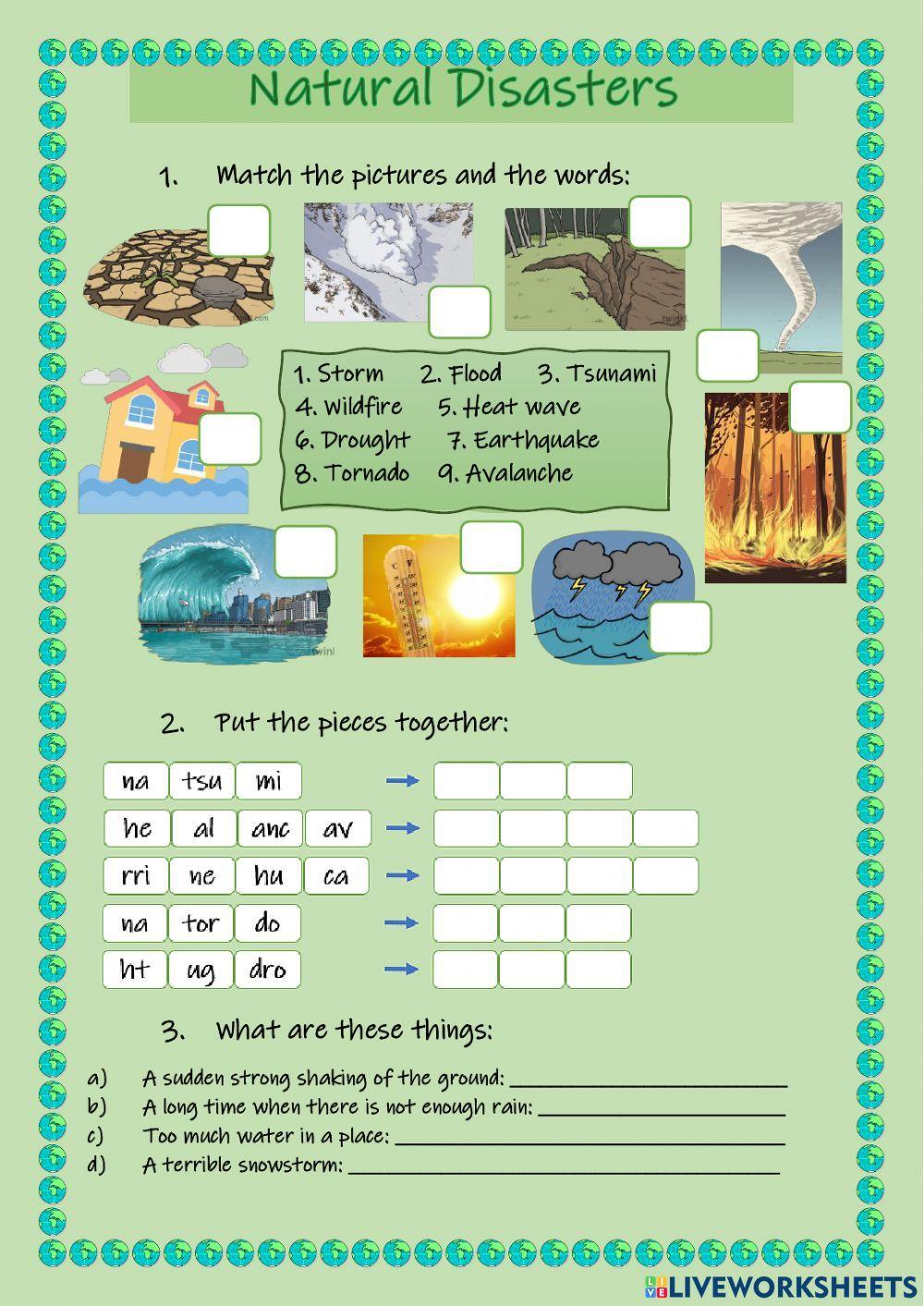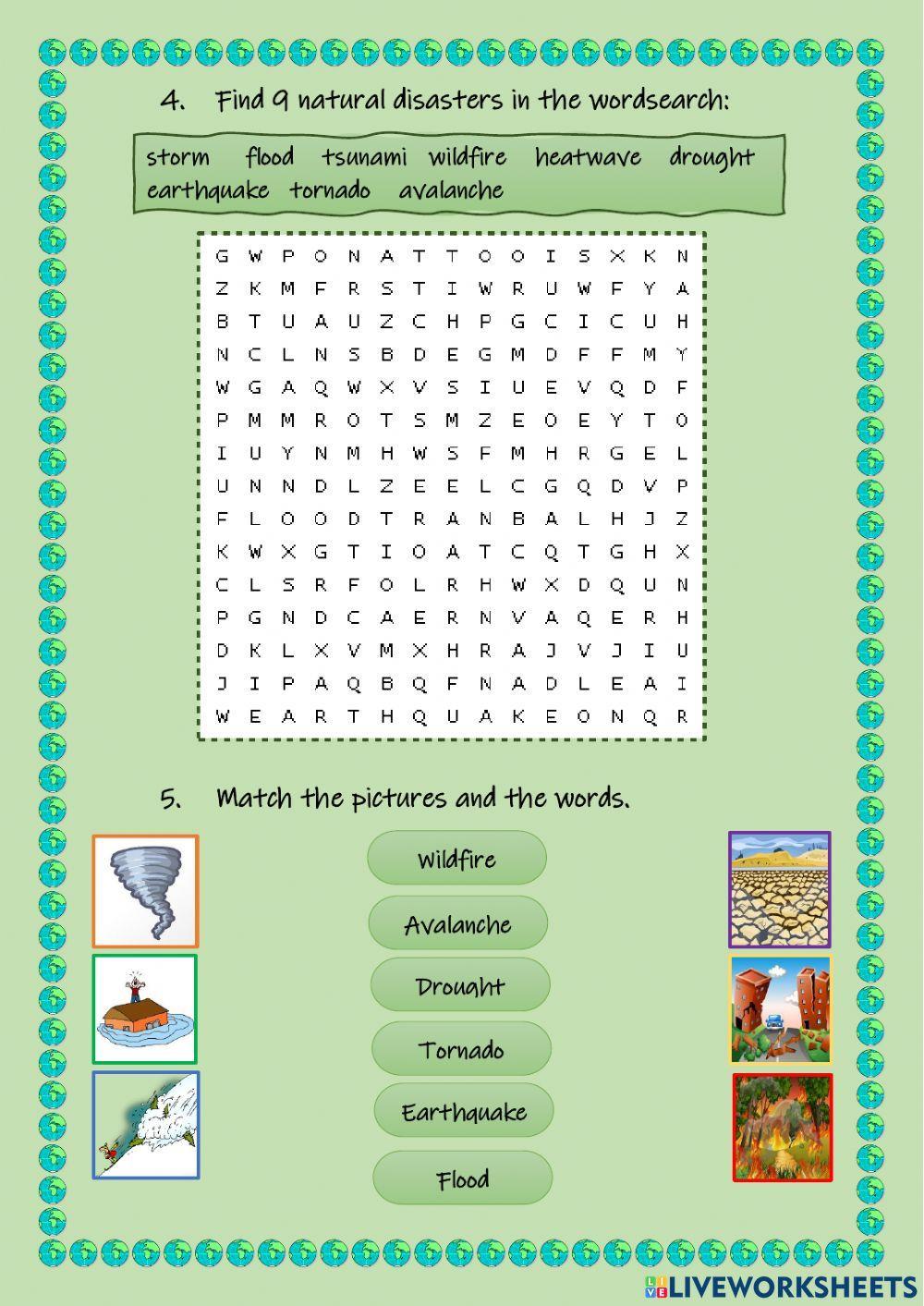-
English as a Second Language (ESL)
-
Natural disasters
-
Age 9-13
-
level: 6th kids
-
English
Author's Instructions
Activity about natural disasters.
-
English as a Second Language (ESL)
-
Natural disasters
-
Age 9-13
-
level: 6th kids
-
English
Author's Instructions
Activity about natural disasters.












